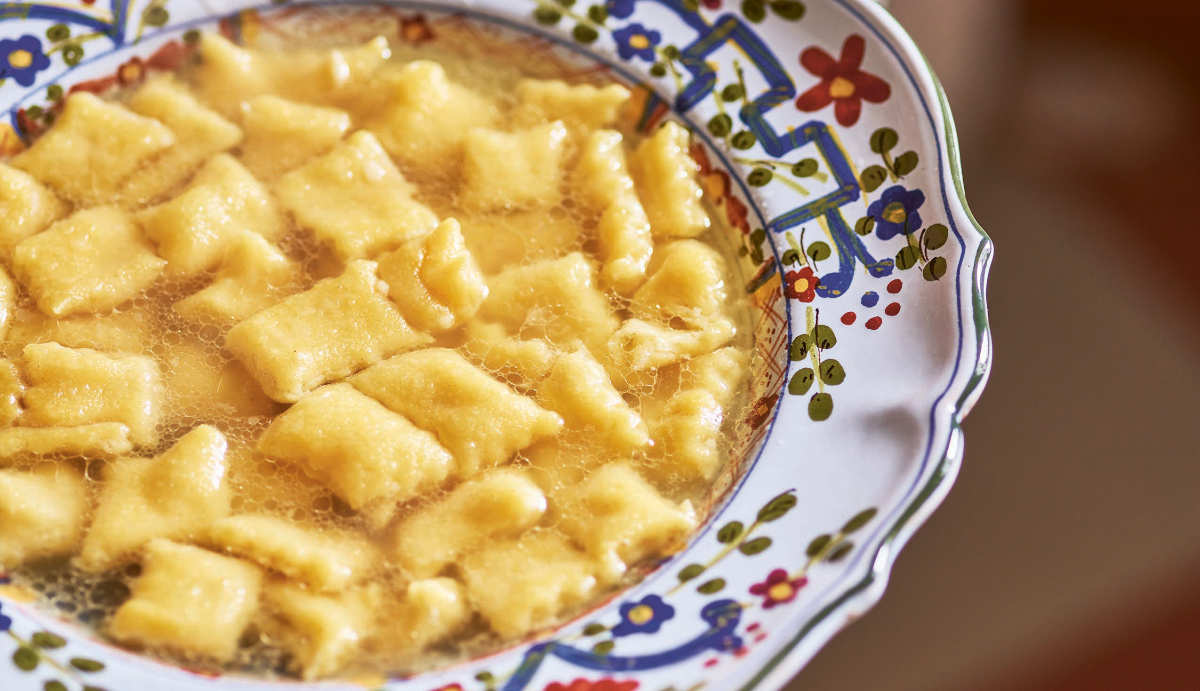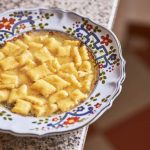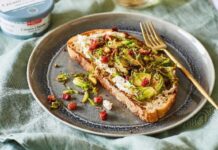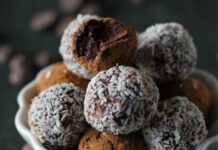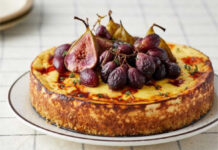Even bona fide Italians rely on dried pasta. Reaching for hard twirls of fusilli and twiggy strands of spaghetti is not exactly frowned upon – we’re all busy, we all want pasta, and you really can’t argue with the packet stuff in those circumstances.
But there are those who will make their own fresh egg pasta from scratch, and have been doing so all their lives. One such is 85-year-old Maria, one of the nonnas to star in Vicky Bennison’s Pasta Grannies cookbook, which charts Bennison’s mission to meet and film women who still make pasta by hand.
Dressed in a beautiful lace-edged apron she also made herself, in honour of the cookbook, Nonna Maria is teaching us how to make her celebratory Cappelletti (‘little hats’) in Brodo (broth) – the sort of pasta dish traditionally eaten at Christmas, or on feast days. She’s been making pasta since she was 5, when she’d put the broth on before she even went to school, having learnt her technique from her own grandmother.
She is full of dough-related wisdom; from, “Never add water, add extra egg yolk,” if it’s too dry, to, “Brass is better” in terms of pasta cutters, and that you really ought to take care of the board you roll your pasta out on (wooden is better, scrape it clean, don’t cut on the board itself). She also has firm ideas on rolling pins, noting that a “thicker rolling pin is better”, jokingly adding that “you can use it as a weapon as well – for the husband.”
You can’t help but quietly adore a woman who also manages to get through a kilo of Parmesan a week.
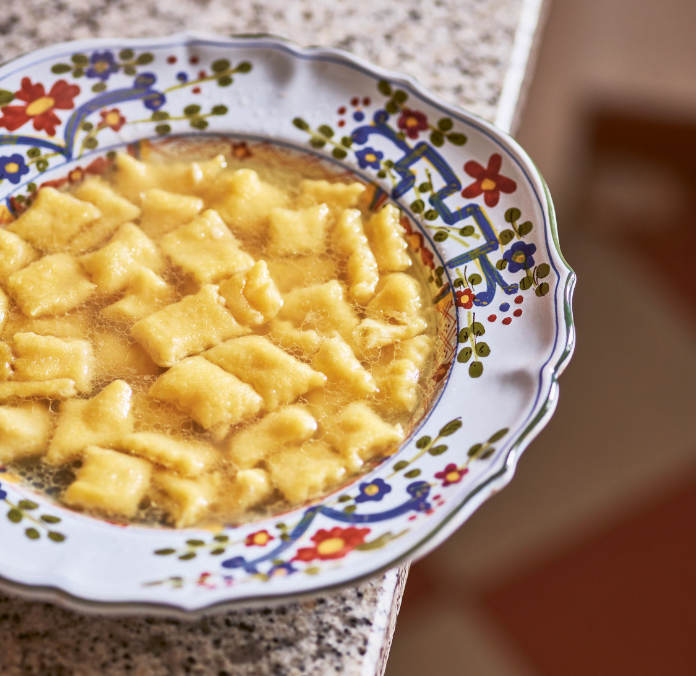
Cappelletti in brodo
Equipment
- Pasta cutter or a knife and ruler
- Large saucepan
- Lidded bowl
Ingredients
- 4 l meat stock
For the pasta (see below)
- 200 g 00 flour or plain flour
- 100 g finely ground semolina flour
- 3 eggs
For the filling
- 200 g grated Parmigiano Reggiano (preferably aged for 36 months)
- 200 g cow's milk ricotta drained weight
- 200 g soft cheese e.g. robiola or bucciatello
- 1 egg yolk
- 1/4 tsp freshly grated nutmeg
To serve
- grated Parmigiano Reggiano
Method
- Make the pasta dough as described below, leaving it to rest for at least an hour, or ideally overnight, before rolling.
- Cut 5cm squares out of the dough, keeping the rest of the squares covered with a tea towel so the dough does not dry out while you make the cappelletti. Maria uses a special ravioli pasta cutter for this task, but a knife and a ruler work just as well.
- To make the filling, mash all the cheeses with the egg yolk and nutmeg. Place a small, marble-sized piece of the mixture into the centre of each pasta square. Fold the pasta over the cheese nugget to create a right-angled triangle. Press and seal the edges of the triangle, then bring the two smaller angled corners together around your finger to create a ‘hat’ and press them together firmly. Repeat until you have finished the mixture. This should be enough for about 70 cappelletti.
- Warm some serving bowls and bring the stock to a simmer in a large saucepan. Cook the cappelletti gently in batches for five or so minutes – test one to see if they are done. Ladle out the pasta with some of the stock onto plates and serve immediately. Pass around the grated Parmigiano Reggiano. You will have stock left over, but it can be used in other soups.
How to make egg pasta dough
- Step 1: Weigh out your ingredientsAllow 100g 00 flour per person for a main course-sized portion. You need 55g egg without its shell for every 100g flour. If your eggs are on the small side, add a bit of water or another egg yolk to bring the quantity up to the right weight. If your weight is slightly over, use the egg shell to scoop out excess egg white.
- Step 2: Mix them togetherTip the flour onto your board in a heap. Use your fingers to make a well in the centre, making sure it’s not too wide or the rim too low, otherwise your egg mix will overflow. Pour the eggs into the well. Take a fork (or use your fingers) and scramble the eggs together.Draw your fork round the inside of the flour wall, so a small quantity of flour falls into the egg mixture. Whisk it in, smooshing any lumps, so you gradually create a batter. Repeat until you have a mixture that won’t run all over the board. At this point you can cave in the flour walls and mix in the rest of the flour with a bench scraper by scraping the flour inwards and over the batter.Mop up any flour with your dough and give it a quick knead. If it is sticky, add a tablespoon of flour and knead it in. It is better to adjust your dough now than later. The dough should feel soft and pillowy, but not too sticky.
- Step 3: Knead the doughKnead the dough for 10 minutes minimum. Think of your hands as waves: The heels of your hands push the dough away from you, while your fingers pull it back. Once your dough has become a log, turn it 90-degrees and fold it in half and continue kneading. You want to work at a brisk pace, as air is the enemy of decent pasta – it will dry it out, so don’t dawdle. Your dough should feel silky and smooth.
- Step 4: Leave the dough to restPlace the dough in a lidded bowl and cover it to stop it from drying out. Cling film is good too, but you may not want to use it. Leave the dough at room temperature for at least 30 minutes or leave it in the fridge overnight. It’s important to bring the pasta back to room temperature before you try rolling it.
- Step 5: Roll out the doughWatching the Pasta Grannies ‘How to Roll Pasta’ video on YouTube and remember to keep your pasta floured throughout the process. Eventually, you will end up with pasta you can see through. It should feel like heavy linen.
Nutrition
Extracted from Pasta Grannies: The Secrets of Italy’s Best Home Cooks by Vicky Bennison, published by Hardie Grant. Photography Emma Lee.
You may also be interested in…
This article may include affiliate links to products and services where we may receive a small fee to support the running of this site if you make a purchase or is a sponsored article from one of our select editorial partners providing valuable advice and information to our readers.























































